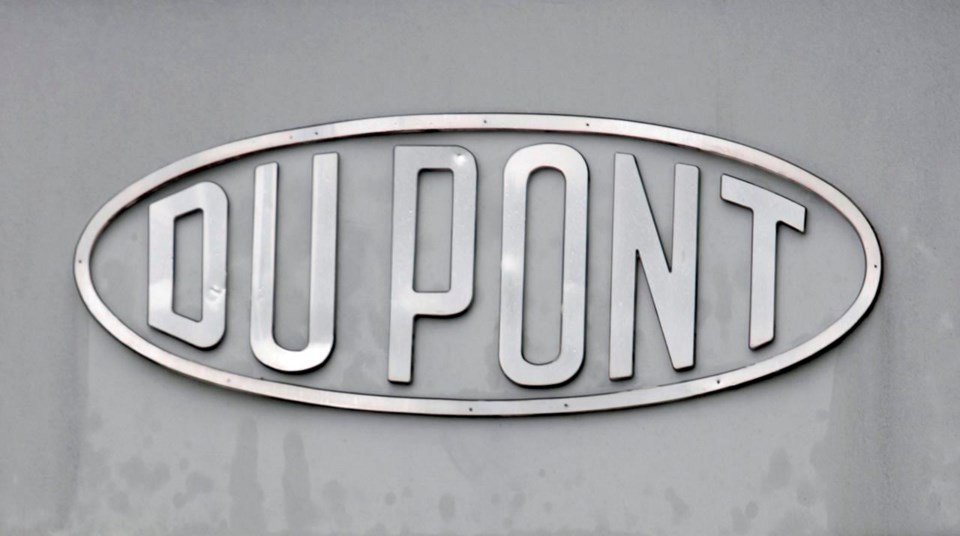TRAVERSE CITY, Mich. (AP) — Three chemical companies said Friday they had reached a $1.18 billion deal to resolve complaints of polluting many U.S. drinking water systems with potentially harmful compounds known as PFAS.
DuPont de Nemours Inc., The Chemours Co. and Corteva Inc. said they would establish a fund to compensate water providers for contamination with the chemicals used widely in nonstick, water- and grease-resistant products, as well as some firefighting foams.
Described as “forever chemicals” because they don't degrade naturally in the environment, PFAS have been linked to a variety of health problems, including liver and immune-system damage and some cancers.
The compounds have been detected at varying levels in drinking water around the nation. The Environmental Protection Agency in March proposed strict limits on two common types, PFOA and PFOS, and said it wanted to regulate four others. Water providers would be responsible for monitoring their systems for the chemicals.
The agreement would settle a case that was scheduled for trial Monday involving a claim by Stuart, Florida, one of about 300 communities that have filed similar suits since 2018 against companies that produced firefighting foam or the PFAS it contained.
They are pending in U.S. District Court in Charleston, South Carolina, where Judge Richard Gergel is overseeing thousands of complaints alleging PFAS damages. Among the plaintiffs are water providers, airports, and a number of states and private well owners.
“This agreement represents the first of many steps to begin to redress the harms of PFAS contamination in America’s drinking water supplies,” law firms representing plaintiffs said in a statement.
Chemours and Corteva are spinoffs of DuPont, which made PFAS that other companies used in firefighting foam. It has tainted groundwater on and near military bases and other locations where it's used in training exercises.
The companies said in a joint statement the proposed settlement would “comprehensively resolve all PFAS-related drinking water claims of a defined class of public water systems that serve the vast majority of the United States population.”
That group could include thousands of public water systems, from large cities to those serving a few thousand residents, said Michael London, lead counsel for one of the law firms bringing the actions. To qualify for shares of the fund, they would have to test their water and detect PFAS.
Chemours would contribute half of the fund — about $592 million. DuPont will pay $400 million and Corteva $193 million. The companies agreed in 2021 to split expenses in PFAS cases.
If Judge Gergel approves the deal, he will set a timetable for notifying water providers who might stake claims.
They are free to opt out and pursue separate cases, but participants “will get funds to address PFAS contamination right now,” said Carla Pickrel, an attorney whose firm represents about 200 plaintiffs including California Water Service; Sioux Falls, South Dakota; and Yarmouth, Massachusetts.
The agreement excludes systems owned by states or the U.S. government and small systems that haven't detected PFAS and aren't legally required to monitor for it.
It doesn't settle thousands of cases against other PFAS makers and dealers. Among them are 3M, the primary manufacturer of firefighting foam containing the compounds; Tyco Fire Products; and Chemguard. A trial in Stuart, Florida's, case against 3M begins Monday.
Pennsylvania this week became the latest state to sue, accusing Chemours and DuPont of marketing the chemicals to firefighting foam manufacturers in the state despite knowing for decades they posed health dangers.
The state seeks restitution for cleanup costs, noting that drinking water found in and around a pair of military facilities in suburban Philadelphia had some of the nation's highest PFAS contamination readings.
“This settlement by DuPont, in our mind’s eye, deals with really just a fraction of this contamination,” London said.
______
AP reporter Marc Levy in Harrisburg, Pennsylvania, contributed to this story.
John Flesher, The Associated Press



